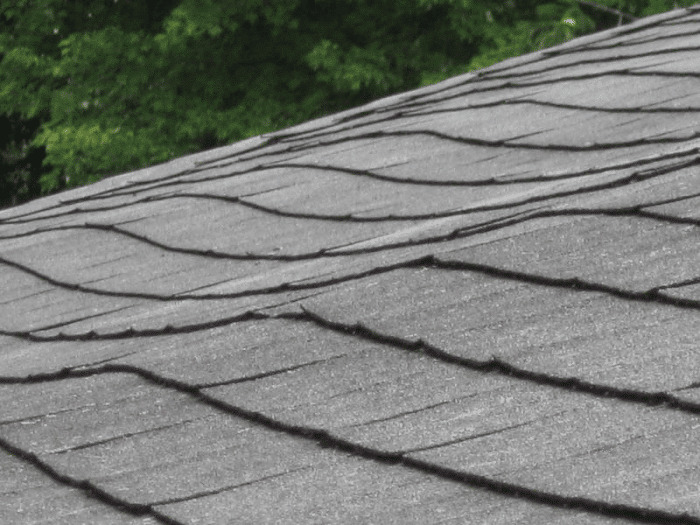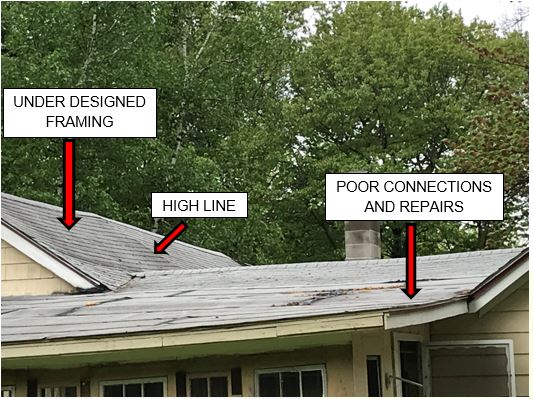Sagging Roofs From Moisture

Naturally if you see buckets or pots setting about you know there s probably moisture.
Sagging roofs from moisture. Removing outer roofing material and underlayment from above will allow you to see the extent of the damage. Are prone to leaking. Roof leaks are the most common source of moisture in attics. Older roofs and roofs with damaged tiles shingles etc.
Then this moisture expands and contracts with temperature changes widening the opening in your roof. Also if there is noticeable sagging to your roof particularly between the rafters then your sheathing is compromised time to replace no inspection necessary. Since roofs are designed to be straight a curved or sagging roof means that its structural integrity is insufficient and it may be a warning sign that your roof is headed for collapse. Different weather conditions can wreak havoc on your roof as well.
Age of roof and weather conditions. Fixing a sagging roof as soon as you spot it is very important otherwise you could find that the problem will only worsen over time and in the end you may need to have the entire roof replaced which could be extremely costly not to mention a lot of hassle. Stains damp musty odors and dampness are signs of a leaking roof. Problems with the roof itself aren t the only reason a roof might sag.
On average a roof lasts between 15 to 30 years depending on the design the materials used and your climate. If you have just stepped outside your house and realized that your roof is no longer straight this could signal a problem. Sagging problems can still be primarily blamed on poor craftsmanship. Another sign of long time water damage is a sagging ceiling.
Moisture for example can settle in different parts of your roof. If your roof is more than 30 years old rebuilding it will be the most effective approach to dealing with sagging. So choose your contractors wisely. This deterioration spreads quickly.
Over time the moisture cause these parts to deteriorate.














































